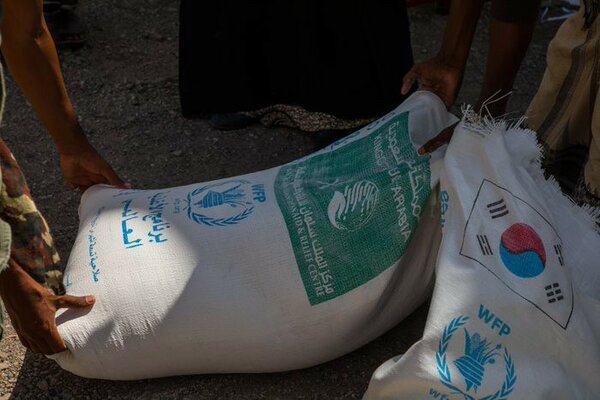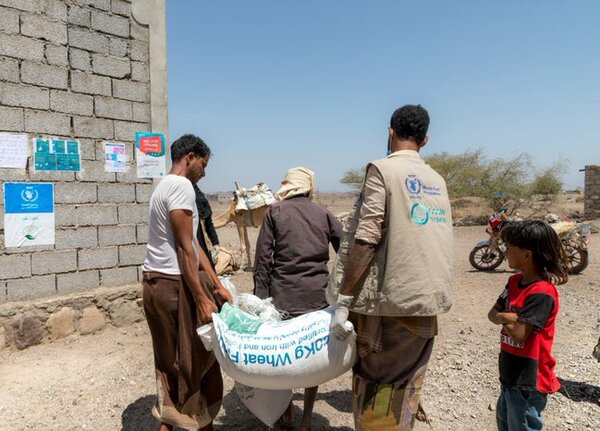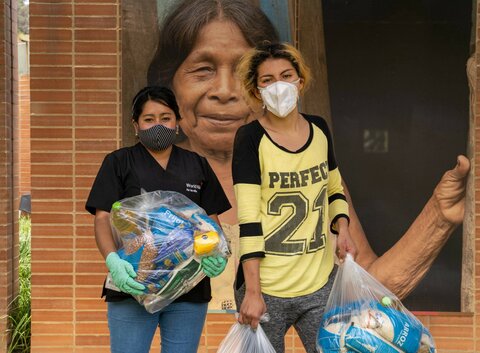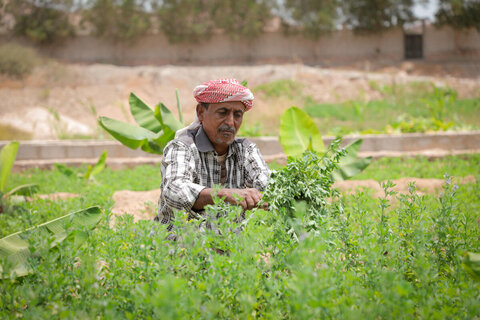Yemen: World’s worst hunger hotspot risks further decline, say UN agencies

By Annabel Symington and Peyvand Khorsandi
Conflict, a currency in freefall and coronavirus are threatening to push more people in Yemen — already in the throes of the world's worst hunger crisis — into acute hunger, according to the latest figures from UN agencies and their partners.
The World Food Programme (WFP) already provides food assistance to nearly 13 million people in the country, nearly half the population.
The Integrated Food Security Phase Classification (IPC) analysis for 7.9 million people in 133 districts in Yemen, released Wednesday, forecasts that the number of acutely hungry people is set to increase by 1.2 million people in the next six months.
Yemen: Responding to coronavirus in the world's worst humanitarian crisis

WFP Executive Director David Beasley said the food security analysis — produced in collaboration with the Food and Agriculture Organization of the UN, UNICEF and other partners — paints a "heartbreaking" picture.
"Unless the international community steps up with an urgent injection of funds, we are going to find ourselves right back where we were in 2018, when we had to fight our way back from the brink of a full-scale famine," add Beasley.
Beasley added: "The Yemeni people have already been ravaged by years of conflict-fuelled hunger and malnutrition, and now COVID-19 is ratcheting up their misery. The world needs to open its eyes to this unfolding humanitarian disaster before it's too late."

Rapid increases in the price of basic foods — by over 25 percent for sugar and vegetable oil — mean that one-third of people can no longer afford to purchase enough food, according to WFP VAM analysis.
"WFP's had to reduce emergency food assistance in parts of the country at a time when Yemen needs us the most," a spokesperson for the Rome-based organization said. "We may have to reduce further as funding shortfalls bite. WFP needs $737 million to the end of the year to keep this vital safety net for the millions in Yemen who rely on humanitarian assistance to survive."

WFP and partners last warned of the risk of famine in Yemen in late 2018. In 2019, the coordinated humanitarian response pulled Yemen back from the brink. This included expanding emergency food assistance from 8 million people to 13 million people, and doubling assistance in the worst-hit areas.
But these gains could quickly be undone as economic shocks, conflict, floods, desert locusts and now COVID-19 drive more people into increased levels of hunger.

Acute food insecurity will increase from the current 25 percent of the population to 40 percent by the end of the year in the areas surveyed — an increase from 2 million people to 3.2 million people out of a surveyed population of 7.9 million. The areas forecast to experience the worst deterioration over the next six months are Abyan, Aden, Ad Dhalee, Hadramaut, Lahj and Taizz.


Rapid economic deterioration is a core driver of this decline: the Yemeni riyal has lost 19 percent of its value since the start of the year. Experts warn the exchange rate could reach 1,000-Yemeni-rials-to-US$1 by the end of the year.
A US$2 billion deposit from Saudi Arabia to the Central Bank of Yemen in 2018 is nearing depletion, leaving Yemen with almost no foreign currency reserves, according to UN sources.
Meanwhile, the coronavirus pandemic which is sweeping largely unchecked across the country. Yemen currently has the worst fatality rate for COVID-19 in the world — WFP has lost three members of its national staff there to the disease.
Coronavirus and hunger: WFP to assist largest number of people ever

Beyond the impact of the virus itself, disruptions to global supply chains risk exacerbating the food security situation in import-dependent Yemen, contributing to crushing food-price increases and shortages.
WFP Country Director for Yemen, Laurent Bukera, said: "Yemen is hanging by a thread."
Bukera added: "The forecast for the next few months is very concerning and it's essential that we have the resources to be able to continue to deliver food assistance to the millions who rely on it. If we fail to act now, the consequences will be devastating".


